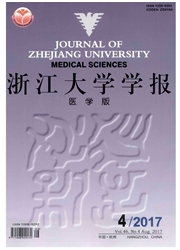

 中文摘要:
中文摘要:
芋螺睡眠肽是一类与众不同的芋螺毒素,一级结构有高度同源性,它含有丰富的γ-羧基谷氨酸,和其他类芋螺毒素不同的是一般不合二硫键(除了芋螺睡眠肽-R),在结合金属离子后,构像中α-螺旋结构的成分会有不同程度地增加。芋螺睡眠肽是一类非竞争性的N-甲基-D-天门冬氨酸(N—methyl—D—aspartate,NMDA)受体的选择性抑制剂,并且具有受体亚型特异性,颅内注射芋螺睡眠肽后,实验鼠会呈现一种睡眠样症状。序列及结构分析显示,正是芋螺睡眠肽序列中高度保守的氨基酸残基决定了它们的结构及功能,文中对其结构和功能的关系作了综合分析。
 英文摘要:
英文摘要:
Conantokin is a distinct family of conotoxin superfamily. Its members share considerable overall sequence homology. Their defining attributes include a high relative content of gamma-carboxyglutamic acid (Gla). They are generally devoid of disufide-loop contrasted with other conotoxins (except for conantokin-R). Upon binding to metal ions,the content of α-helix conformation increases in different degrees. They inhibit NMDA (N-methyl-D-aspartate) receptors. moreover, different conantokin species present different NMDA receptor subunit specificity. It can induce sleep-like symptoms in young mice when delivered intracranially. Analysis of sequences and structures indicates that the high conserved residues of these peptides are determinative in their structures and functions. In this article, the relationships of their structures and functions are reviewed in detail.
 同期刊论文项目
同期刊论文项目
 同项目期刊论文
同项目期刊论文
 期刊信息
期刊信息
